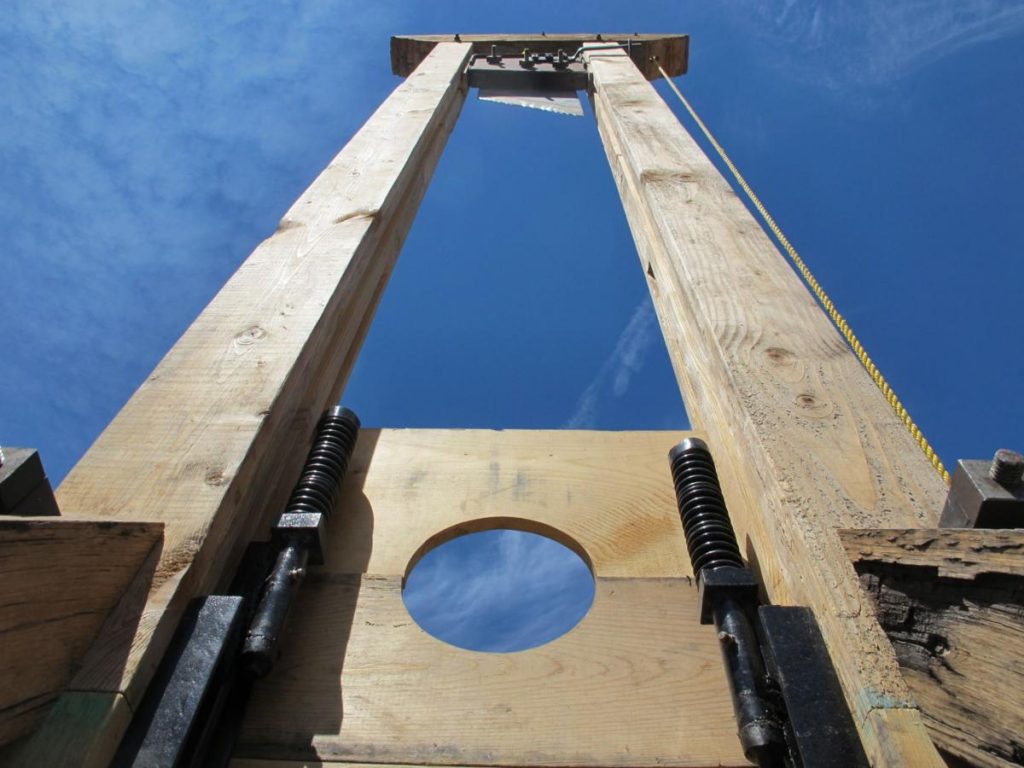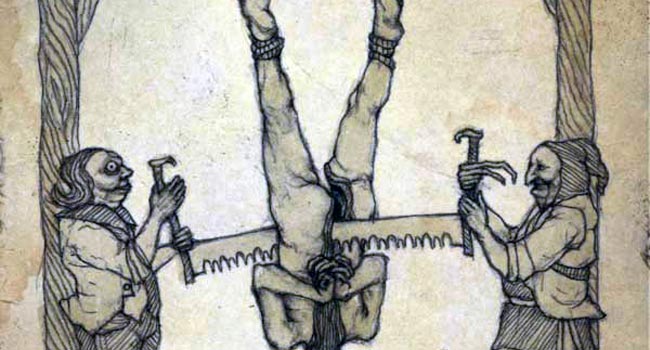Society has evolved, gone are the times when capital punishments were taken to inhumane extremes. Today, in most countries, methods of execution have been reduced to hanging , shooting, stoning, Lethal injection, while some areas have abolished the death penalty.
Prior to the 21st century, law enforcement was far from liberal, as offences such as murder, witchcraft or even blasphemy were met with severe punishments and executions. Below are 10 of the most savage methods of execution in history.
1. Burning at the Stake

Burning at the stake was a method of execution practiced in Babylonia and ancient Israel and later adopted in Europe and North America. Spanish heretics suffered this penalty during the Inquisition, as did French disbelievers and heretics. Burning at the stake was also a traditional form of execution for women found guilty of witchcraft.
2. Crucifixion

Crucifixion is a method of capital punishment in which the victim is tied or nailed to a large wooden beam and left to hang, perhaps for several days, until eventual death from exhaustion and asphyxiation. This brutal method of execution practiced primarily by the Romans, was intended to be as slow, painful, and humiliating as possible for the offender.
3. Cement Shoes

Cement shoes, concrete shoes, or Chicago overcoat is a method of murder or body disposal, usually associated with the Mafia or gangs. It involves weighting down the victim, dead or alive, with concrete and throwing them into water in order to both kill, and ensure the body will never be found.
4. Guillotine

Guillotine is an instrument for inflicting capital punishment that involved decapitation. Introduced into France in 1792, the guillotine was one of the first methods of execution created when it was thought that capital punishment was intended to end life rather than inflict pain. Convicted murderer Hamida Djandoubi was the last person to be executed by the guillotine in 1977.
5. Upright Jerker

Having originated in the United States during the 19th and early 20th century, the upright jerker was an execution method and device intended to replace hangings. As in a hanging, a cord would be wrapped around the neck of the condemned, but rather than the victim being dropped through a trap door to sever the spinal cord, they are violently jerked upwards, typically by a crane. The upright jerker was also popular in mcountries like Iran.
6. Colombian Necktie

A Colombian necktie, is a method of execution by mutilation used in South America wherein the victim’s throat would be slit open, and their tongue pulled out through the open wound. The bodies of victims were usually left for all to see, usually as a warning to others. The Colombian necktie is sometimes credited to drug kingpin Pablo Escobar.
7. Sawing

Sawing to death goes way back to medieval China and in ancient Rome. The victim is tied upside down and stripped naked and then sawn in half starting at the groin. Usually the victim might not die immediately because the upside down position means that the brain would receive enough blood to keep the person conscious until the large vessels of the abdomen were severed.
8. Flaying

Flaying, also known as skinning, is a method of slow and painful execution in which skin is removed from the body. Generally, an attempt is made to keep the removed portion of skin intact which would typically be nailed in a public place for all to see in order to stir up fear.
9. Crushing

Death by crushing or pressing is a method of execution that generally involves the placement of intense weight upon a person with the intent to kill.
10. The Spanish Tickler

The Spanish tickler is an instrument that was used to tear a victim’s skin apart, sparing neither bones nor muscles. The victim is usually striped naked and tied, making him or her completely defenseless, and torture often begins with the limbs and slowly into the chest, back, neck and finally the face. Victims oftentimes do not die immediately but rather, over time as a result of the wounds getting infected.



